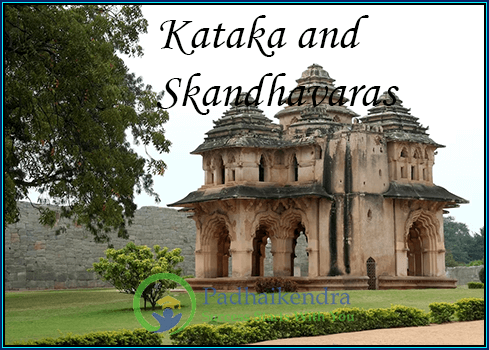Meaning of the term Kataka and Skandhavaras used during Satavahana Empire
During the Satavahana Empire, Kataka and Skandhavaras were two important administrative divisions that were used to govern the kingdom.
Kataka referred to a large administrative unit that was roughly equivalent to a modern-day district or county. The word “Kataka” is derived from the Sanskrit word “Katakam,” which means “region” or “territory.” Each Kataka was governed by a high-ranking official called a “Katakadhyaksha” who was responsible for maintaining law and order, collecting taxes, and overseeing the administration of the region.
Skandhavaras, on the other hand, were smaller administrative units that were equivalent to a modern-day sub-district or taluk. The word “Skandhavara” is derived from the Sanskrit words “Skandha,” which means “shoulder,” and “Vara,” which means “zone” or “region.” Each Skandhavara was governed by an official called a “Skandhavaradhyaksha” who reported to the Katakadhyaksha and was responsible for the day-to-day administration of the region.
The Satavahana Empire was divided into several Katakas, which were further divided into Skandhavaras. This administrative structure allowed the empire to be governed efficiently and effectively, with power and authority distributed among officials at different levels of the administration.
The Kataka and Skandhavara system was similar to the administrative structures used in other ancient Indian kingdoms, such as the Mauryan and Gupta Empires. This system continued to be used in different forms throughout Indian history, and many of the administrative divisions that exist in modern India can be traced back to this ancient system.

